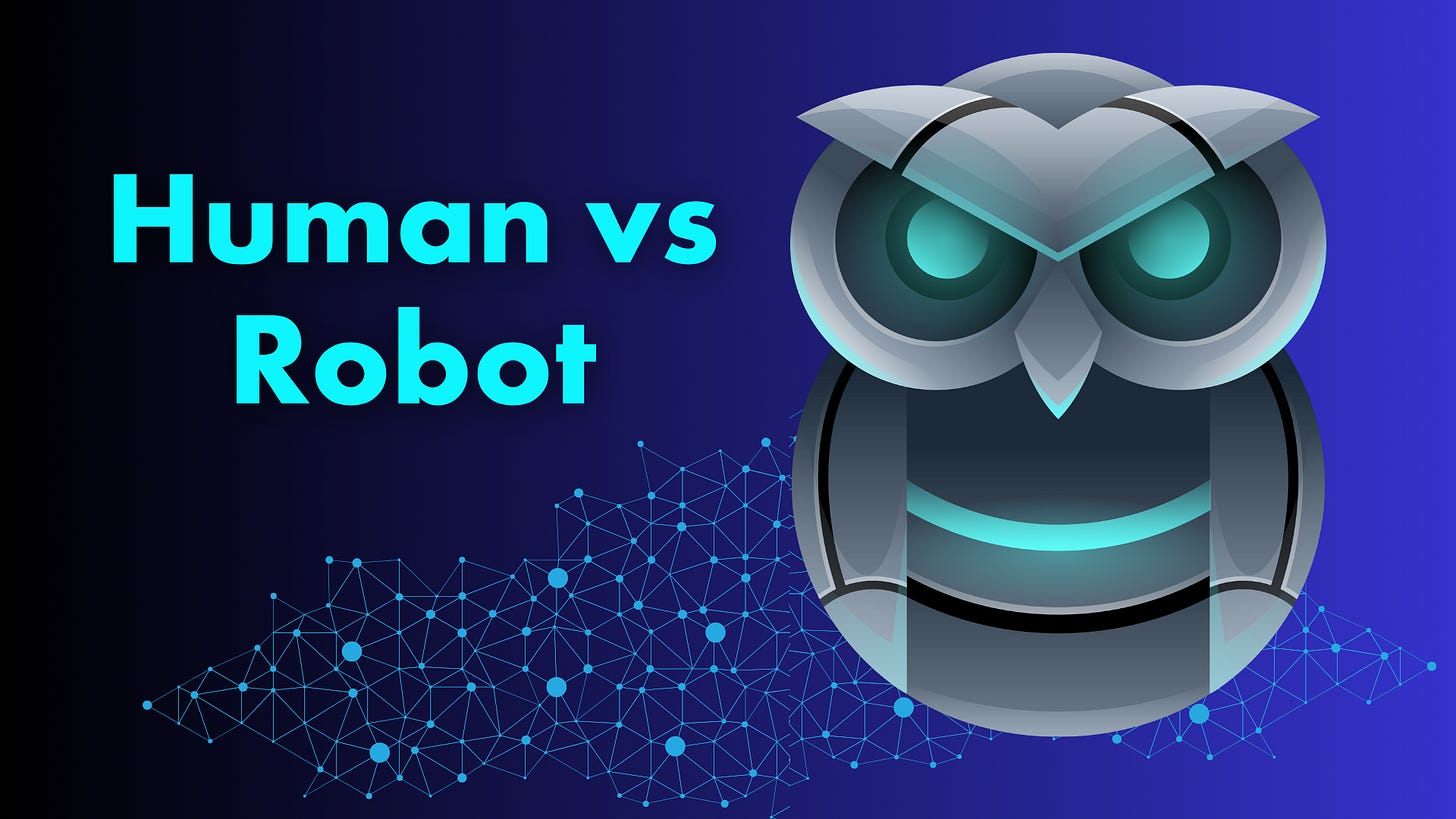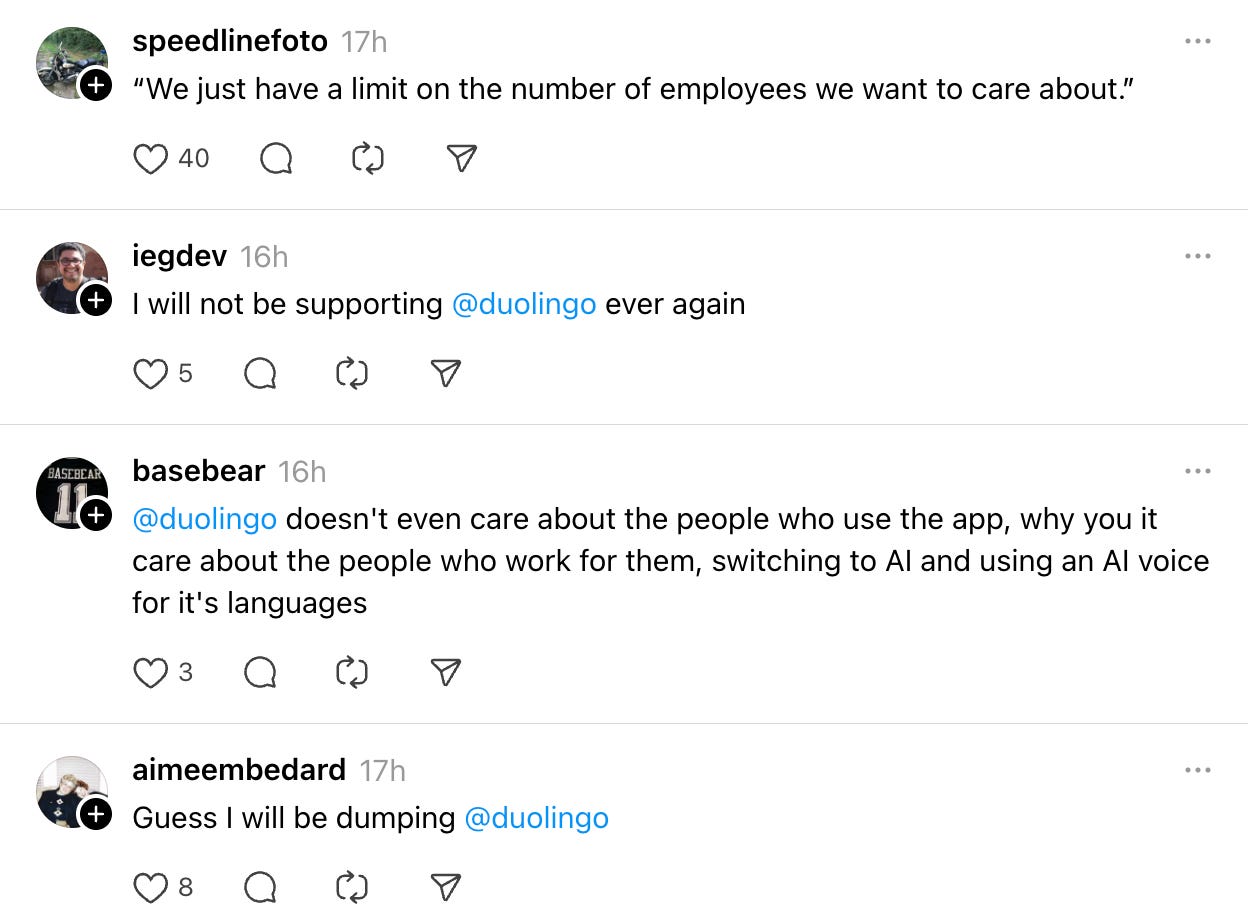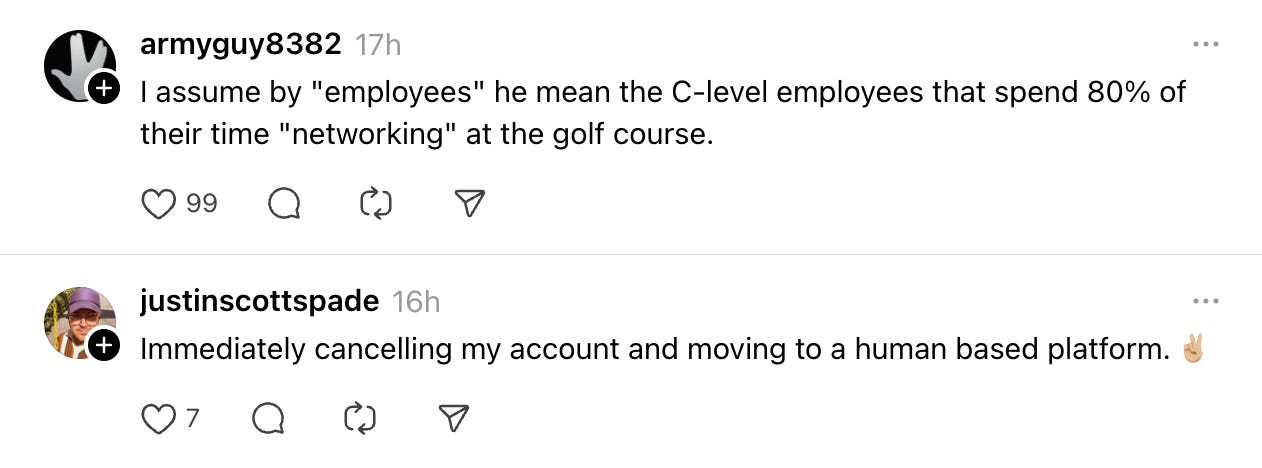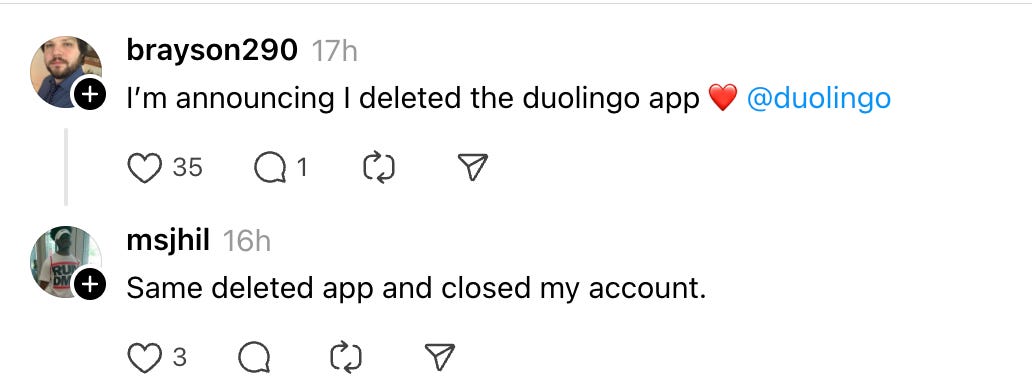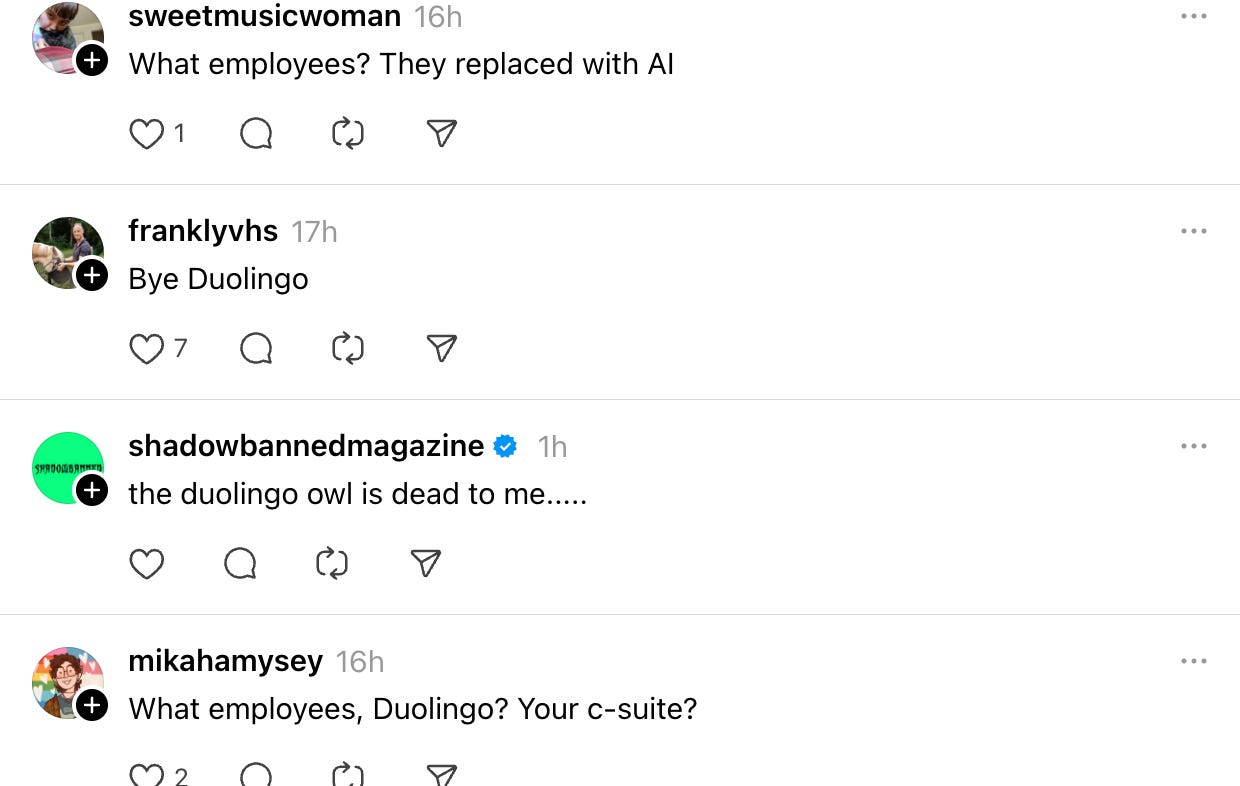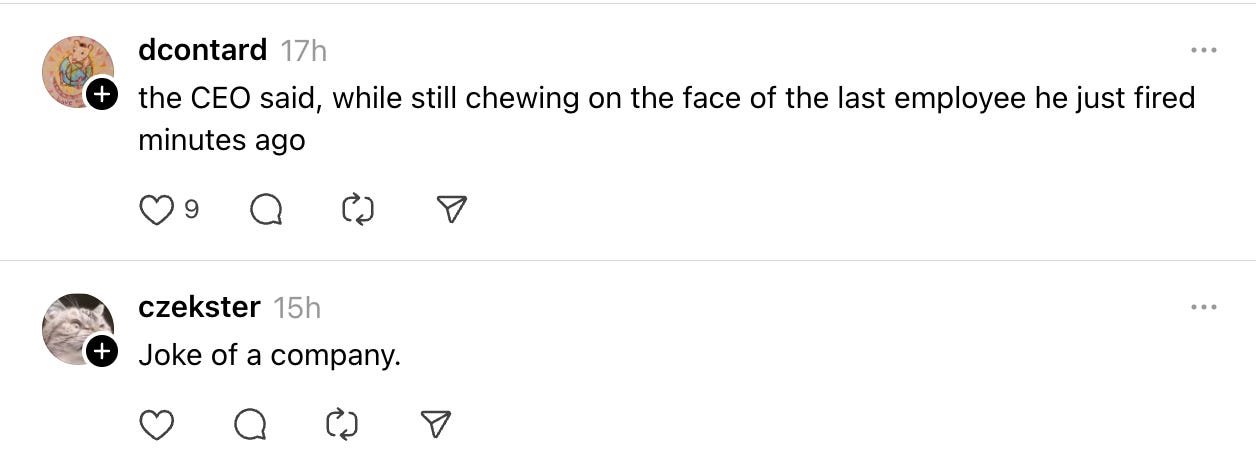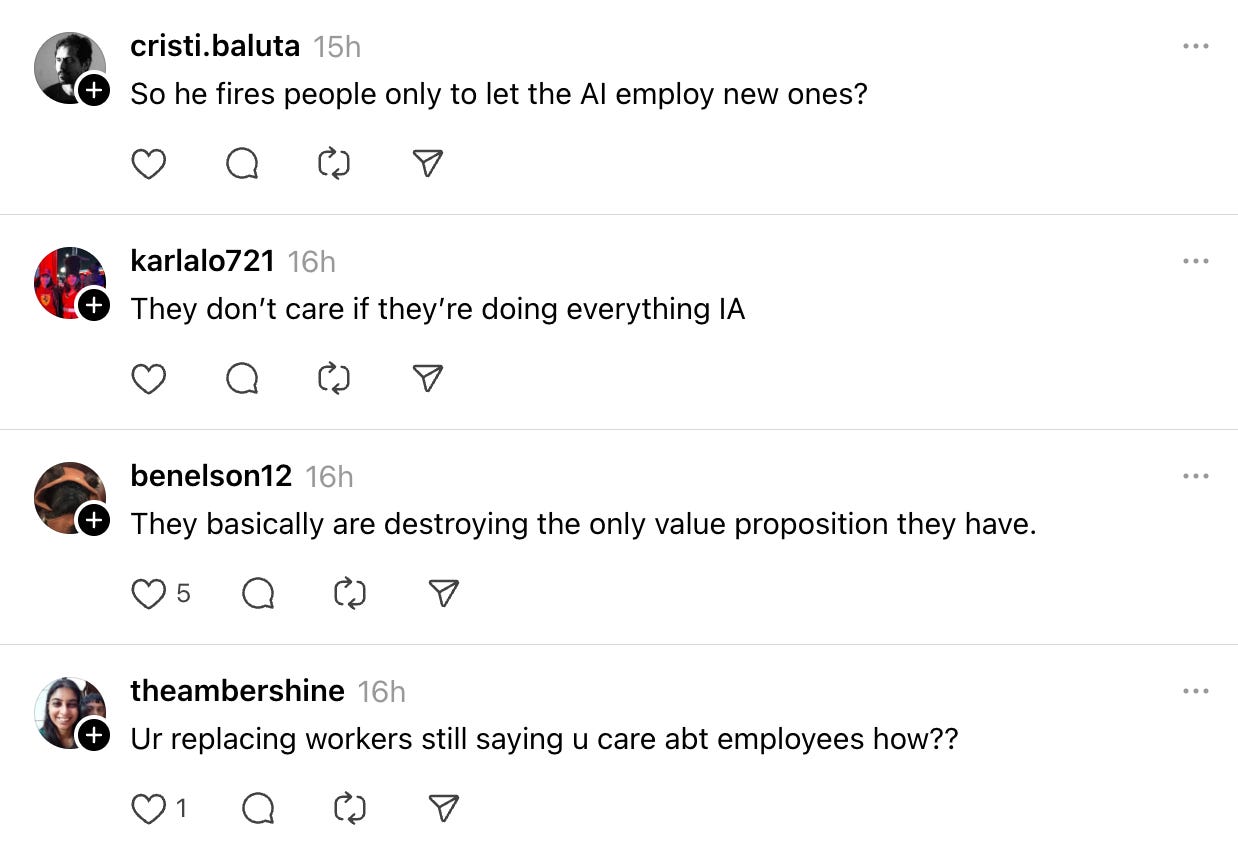Summary: This week we look at a recent announcement by Duolingo to replace human workers with AI. I discuss how an intention statement and simple framework might have helped the company avoid the PR disaster that resulted from the announcement.
The popular language learning Duolingo just hit send on an email that’s making waves: they’re going all-in on AI. From content creation to hiring decisions, AI will now dominate every part of the company.
The goal? Faster content, leaner operations, and more scale.
But people on the interwebs were not impressed and the backlash was immediate. Many consumers saw it as yet another signal that human jobs—especially contract roles—are being eliminated.
Here’s the highlights of the email:
Duolingo is making AI a central part of its business, immediately — everything from creating content to hiring and internal operations will include AI.
The company’s goal is to rely less on human contractors for tasks that AI can now handle more efficiently.
The shift is all about scaling content faster and more effectively, using AI to boost productivity.
Even hiring and performance reviews are changing — candidates and employees will be evaluated by AI on how well they understand and use AI.
Duolingo says the goal isn’t to replace people, but to remove repetitive work and give employees more room for creativity.
That last point got me— trying to soften the blow by saying AI will “free up humans for more creative work.” Sure, Jan.
The timing, tone, and sheer scale of the shift in Duolingo’s intentions had consumer reactions coming in quick and unkind:
Be Clear from the Get-go
Duolingo’s announcement seemed to stun consumers (and employees) and seemed like a giant shift from the quirky, human-invested public persona seen on social. And, worse, they failed to make it absolutely clear whether they are committed to humans or to AI (or an ethical combination).
There cannot be any ambiguity at all on this matter, or you fall in danger of alienating one of the following buckets:
Reputation and Trust: Consumers and investors are more socially conscious than ever. Companies with ethical practices can build trust and loyalty, while unethical behavior can result in boycotts, bad press, and reputational damage.
Regulatory Compliance: Many industries face strict regulations, and adherence to ethical standards helps avoid legal issues. Ethical lapses can lead to costly fines, lawsuits, and government scrutiny.
Sustainability and Social Responsibility: Many companies integrate ethics into corporate social responsibility (CSR) initiatives, focusing on environmental sustainability, diversity, and fair labor practices as part of long-term business strategies.
Talent Retention and Morale: Employees increasingly want to work for companies that align with their values. A strong ethical culture can help attract and retain talent, boosting overall morale and productivity.
Risk Management: Ethical business practices can help mitigate risks like data breaches, scandals, or negative public sentiment. AI ethics, for example, ensures responsible data usage and minimizes bias in automated decisions.
All of these factors must play a part as you decide whether to retrain or replace their human workforce.
State Your Intention Clearly
Before any decision was made, Duolingo should have taken the step of forming an intention statement.
While a mission statement guides the corporate ship in a lofty vision-type way, an intention statement is a stopgap that keeps the ship on track while making clear to all (employees, consumers, stockholders, etc.) what your intentions are.
To create a simple yet meaningful intention statement for AI in the workplace, use the following steps:
Identify Core Values: Define the company’s core values as they relate to three key areas: 1) People (employees, stakeholders, and customers), 2) ethics, and 3) technology innovation. This is the time to define how you want the technology you use to benefit employees, customers, and society at large. This is the step where you focus on the positives of using tools like AI.
Define Ethical Boundaries: Clarify the ethical limits of AI use, such as prioritizing human judgment in critical decisions, safeguarding privacy, or avoiding job displacement without retraining opportunities. Of particular importance is the cost-analysis decision on whether there will be retraining or elimination and how that decision will be made compassionately and ethically. This is the step where you focus on the negatives of using tools like AI.
Focus on the Human Element: Emphasize the importance of human skills, creativity, and well-being. The intention statement should reflect a commitment to enhancing the workplace without diminishing the human role. This is the step where you determine whether you will retain or replace, and if the decision is made to eliminate a human role, outline the specific cost-analysis “bottom line” that determines this decision.
Engage Stakeholders: Gather input from various stakeholders, including leadership, employees, and possibly even customers, to understand concerns, expectations, and hopes about AI’s role in the workplace. This will ensure that your statement resonates with the broader community. This is the step where you get buy-in from key parties.
Keep It Simple and Actionable: Use the above brainstorming to create a simple intention statement. It should be short, memorable, and actionable—something everyone can easily understand. It should define how AI is integrated into the organization’s culture. This is the step where you actually write the short, simple intention statement.
Example 1: "Enhance, don’t replace – use AI to empower our people."
Example 2: “AI for human progress.”
Example 3: “Innovation, efficiency, and products first.”
Example 4: “Lead with algorithms, scale with precision.”
As far as I can tell, Duolingo has no intention statement that would have indicated they would be making this type of move right now, thus the surprise and negative reaction.
👉 Click here to learn more about writing an intention statement.
Avoid the PR Backlash
Honestly, Duolingo’s announcement also failed the HEART test I’ve beent talking about - a simple guide for companies to follow when evaluating whether to retrain or replace their human workforce with AI.
Let’s review their errors step by step:
H – Human First
The Duolingo email read like a victory lap for AI, not a thoughtful shift that considers the real people doing the real work. Leading with efficiency over empathy is a guaranteed way to lose the room.
E – Empathy Check
If anyone had gut-checked how this would feel to contractors or employees—many of whom just watched their roles get quietly swallowed by automation—they might’ve rethought the rollout. Instead, it landed cold.
A – Alignment
Does replacing creatives with algorithms align with your mission to make education joyful and accessible? Or does it just make the boardroom happy? Big difference.
R – Responsibility
There was no clear plan for how the company would handle transitions, retraining, or even acknowledgment of job losses. Saying AI will “free people up” doesn’t count unless you show what they’re being freed into.
T – Trust
The biggest miss: trust. The tone of the message was so much about AI, it left people wondering if there’s room for humans at all. That’s not how you build loyalty—inside or outside the company.
👉 Click here to read more about the HEART Framework
The Bottom Line
While consumers may be outraged, we’ll see if it rises to the point where it hurts the company long term. Duolingo’s stock saw a positive rise after their announcement, indicating investors see the pros of a more streamlined company with fewer expenditures, so chances are they will stay the course. Money talks loudest after all.
And, any long-time reader of my Substack knows I predict most companies will go this way of embracing the robots over humans.
But I sincerely hope other companies will embrace the HEART Guide and find a way to compassionately retrain or replace their human workforce. At the very least it will help them avoid a PR disaster!
Disclosure: This week the wording is all mine, with a few flashbacks to earlier posts, so please excuse the very human typos.




